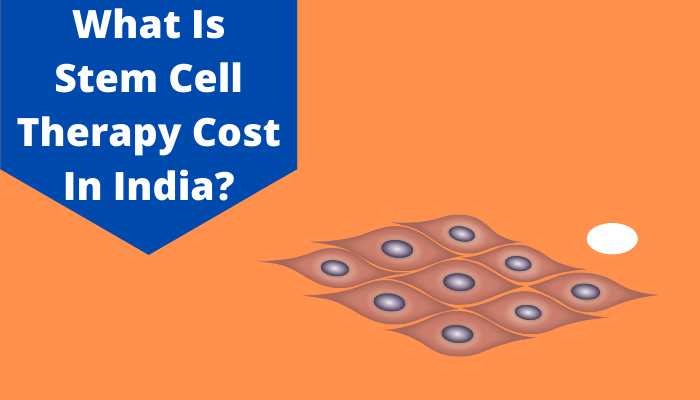Upgrading to Top-Up Plan vs Buying a new Health Insurance Plan
An ideal health insurance is one which covers your needs during any health emergency. But what if in a case the hospital bills exceed your health insurance cover? In such situations you need to pay the extra amount from your own pocket. The problem would arise if the excess amount is large and you don’t have the liquidity to pay the same. You could be in trouble because most hospitals will not even proceed with your case unless the bills are paid.
We indeed have a solution so that the policy holders do not land in such dire situations, which can be achieved with the benefits of a top-up plan that is added to your existing health insurance plan. But why don’t you buy another health insurance policy to cover maximum amount in an emergency or why not upgrade the current amount to a limit which covers the exceeding amount? These are some logical questions which might arise in your minds, which we would discuss ahead.
Before delving into the finer points we will understand what are top-up plans in health insurance policies, how these work and what are their advantages and disadvantages? So let’s start off from the basics!
What is a Top-up plan and why opt for it?
In today’s time of COVID-19 most are apprehensive of the possibility that their health insurance policy may just not be enough. In such cases, for maximum coverage you have the choice to opt for a health insurance policy and if you feel the insurance cover is not enough, you can buy a health insurance top-up plan. This will help to increase your maximum coverage amount. In the event of hospitalization, if your claim amount is more than the cover of your base health insurance plan, you can claim that extra amount if you have opted to tag a top-up plan.
Let us understand with an Example…
Mr. X has been continuously renewing his insurance policy of Rs.12 lakh for self and spouse. Considering the rise in the healthcare costs and situations arising due to this ongoing pandemic, he realizes that this coverage amount may just not suffice and may require a re-think. He has 2 options to choose from. He can either upgrade the basic coverage to Rs.24 lakh or take a new Rs.12 lakh additional “top-up” plan. This is something most insurance advisors recommend these days. So which one should he consider choosing?
Mr. X is concerned about the fact that the insufficient health cover that his existing policy provides is completely a matter to be improvised and dealt with. It has been a reality check for him as the basic hospitalization cost could range anywhere between Rs.10-12 lakh. So it’s clear that he needs to increase the basic coverage amount. Generally a top up health plan is like an additional coverage which provides an additional shield to uncertain situations and provides a hedge against excess risks, this is the case for the people who have an existing health insurance policy at a lower cost. Since the top-up provides the additional coverage at low costs, the top-up plan would make a great choice for Mr. X.
Clearly, the top-up plan makes more economic sense compared to either buying a new plan or enhancing the limit of the existing plan. In case of a top-up plan; the same cover will cost much lower as compared to buying a new plan or upgrading the existing one. The cost of the top-up plan is linked to something known as the deductible limit. This is an interesting concept. This limit which is pre-factorized and is disclosed in the offer and only when the cost of a particular illness surpasses that limit the top-up plan gets triggered. The deductible is the cost that the insured has to mandatorily bear before the top-up can be officially triggered. The higher is the deductible amount mentioned in the contract, the cheaper is the top-up health insurance plan. In short, if the existing policy is already for Rs.12 lakhs, then the insured can use that as a deductible so that the risk of underwriting, and therefore the cost is reduced drastically.
Now in case of our prospect Mr. X, he can set the deductible limit as high as Rs.10-Rs.12 lakh since his basic health insurance policy has got him covered up to that amount. But one needs to remember that a top-up plan usually covers only single incidences of hospitalization only. In other words, if his hospital bill exceeds the deductible during the single time of his hospitalization, only in that situation can the top-up plan be used. There are few plans available which do not have the limit of single claim, like the above scenario, but can be claimed for any illness over deductible amount though out the entire year. The normal top-up is limited to only one single hospitalization per year and any hospitalization after that will be covered only if you opt for a super-top up policy.
So all in all there are two kinds of plans which can be accommodated with a regular health insurance plan, (i) top-up plans and (i) super top-up plans.
Top-up plan: As mentioned earlier, top-up health insurance policy is applicable on a per claim basis and is triggered only if the claim amount is more than the cover of the primary health insurance plan. Let’s say, if you have opted for a top-up plan, then in case of hospitalization if the bill amount exceeds the cover of your health insurance plan, then you can claim the differential amount from the top-up plan for that particular claim, but one thing to keep mind is that that this claim is on per claim basis, effective once per year of the plan.
Super top-up plan: Super top-up plans covers the amount if there are multiple claims coming in from the holder, if you have already exhausted the yearly coverage provided by your base or primary health insurance plan. It works at an aggregate level and is triggered whenever you have used your base policy amount. So, unlike top-up plans, there is no maximum threshold on number of claims in a year. This might be suitable to fragile or people exposed more toward illnesses, particularly the elderly. It is also a good idea to have a more comprehensive cover to cover all eventualities.
Let’s cover the Advantages of buying a top-up plan for a health insurance policy over buying/upgrading altogether to a new policy:
(1) Top-up plans weigh more cost-effective as compared to buying a new plan or upgrading to a new plan-
In any scenario, buying a health top-up plan is much more cost-effective over increasing the base cover of the existing primary health insurance plan. And that is the top most reason for some people preferring to buy it in place of increasing the base cover for the existing health insurance plan.
Let’s consider a holder having a health insurance policy of Rs 5 lakh for which he is paying premium amount of Rs 7,000 every year. But, on evaluation of health scenario one feels that the coverage amount is not sufficient and you should have at least Rs 8 lakh as the basic coverage amount. So the holder now decides to increase the coverage of existing plan from Rs 5 lakh to Rs 8 lakh, and premium amount for the policy would be Rs 15,000 yearly. But let’s say, in case you already have a health insurance policy, then the premium amount for top-up plans is usually Rs 1,000 per lakh cover. Hence, for an extra Rs 3 lakh cover, policy holder will have to pay an additional premium of Rs 3,000. The total premium for the policy and the top-up plan combined would be Rs 10,000 per year.
(2) Coverage amount of a primary policy can be increased up to certain limit-
Considering current health scenarios if you want to increase the sum assured for your primary health insurance policy, you can only increase that to certain limited extent. Out of the many, health insurance providers factorize up to what limit will they allow their policyholders to extend their limits. But again, if you opt for a top-up or a super top-up plan, it’s you who can decide what cover amount you want to buy in and to what extent, putting the policyholders on a decision making scale.
Disadvantages of opting a top-up health insurance plan:
(1) Top-up plans have certain waiting period determined of various factors-
Due to the fact that top-up plans are bought as a separate additional plan so they generally have a waiting period during which you can’t make any claims.
Say, like a health insurance plan, top-up plans have an initial waiting period of one month, during this period the holder can make no claims.
(2) In general, for every claim-free year, a health insurance provider rewards its holders by increasing their coverage amount or decreasing their yearly premium amount, although there are some conditions to it, to an extent it’s an advantage many holders look out for. This benefit is called a no-claim bonus.
But, the top-up plans does not come with the benefits of a no-claim bonus from the provider. However, if a policy holder wants to increase their cover amount for top-up plans, then they need to buy more cover.
Conclusion:
Buying top-up plan is a great and go to way to increase health insurance coverage amount. But before buying any plan it’s a healthy habit to make sure to read the policy papers carefully to understand the term and conditions so that one does not face any difficulty during the claim process.
Generally you will need an age proof, identity proof, and an address proof to apply for a health insurance top-up plan. One factor of benefit is one does not require a medical test until 55 years of age, albeit subject to a clean proposal form. In case, health top-up plans cover any medical expenses for its policyholders and their family that arise due to an illness or even an accident. Another benefiting factor is that, the premium paid for top-up health insurance plan is exempted under tax as per sec 80D under the Income Tax Act. One can save up to Rs. 60,000.”FAQs:
What would be documents required for a top-up health insurance plan if I opt for it as an addition to my basic plan?
What does health top-up plan cover?
Is it possible that my top-up health insurance premium be used to save tax?




























